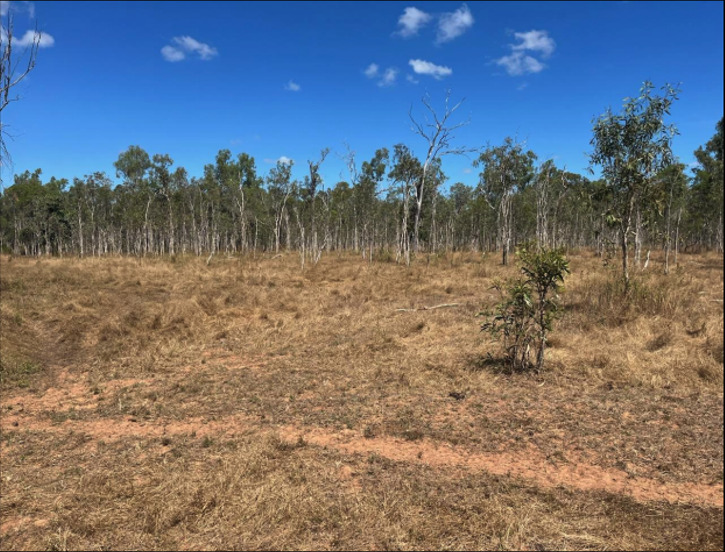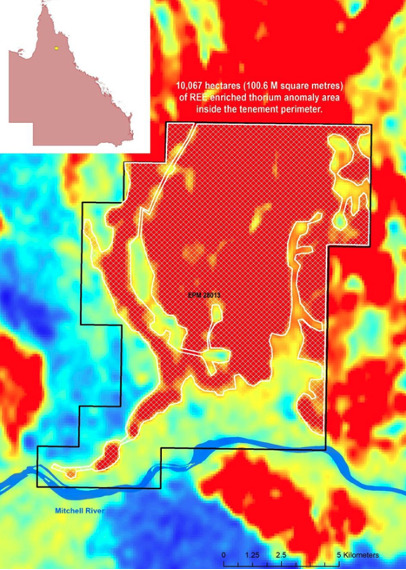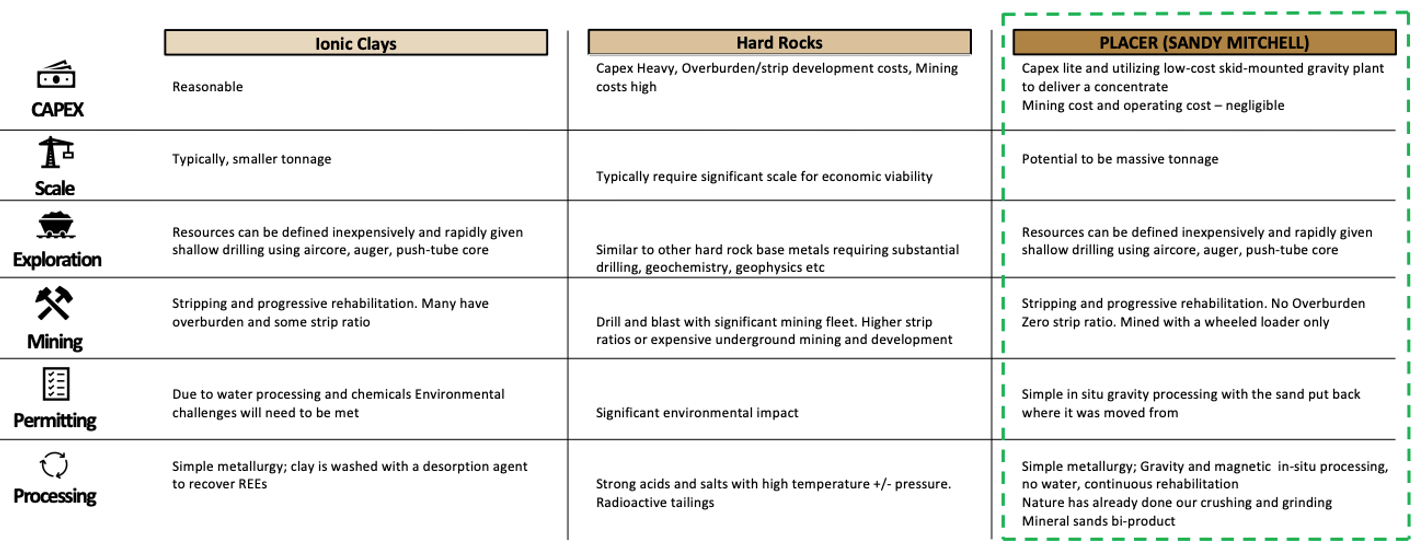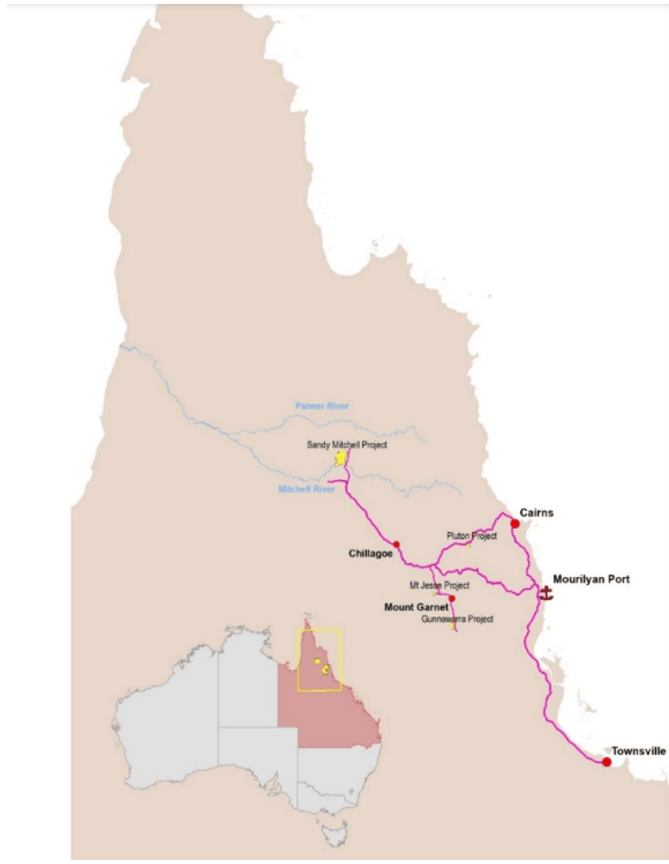Ark Mines’ ‘accidental’ rare earths discovery in QLD could be in production within 18 months

Ark Mines believes it has an amazing opportunity to move the recently drilled Sandy Mitchell project to producer status within 18 months. Pic via Getty Images
- Ark Mines’ Sandy Mitchell project is one of the only inland surface expressed sand placer deposits to host rare earths on the ASX
- Sandy Mitchell hosts all the rare earths, plus heavy minerals and phosphate
- The company is targeting production within the next 18 months
Special Report: Ark Mines’ Sandy Mitchell project isn’t like other rare earth deposits on the ASX. It’s hosted in fine sands known as terrestrial placer deposits, which means a quicker production runway, simple processing model, and lower costs.
Ark Mines (ASX:AHK) acquired the Sandy Mitchell rare earths project in Northern Queensland, about 300km west of Cairns and 100km North of Chillagoe, in March 2023 for $200,000 cash.
According to AHK executive director Roger Jackson, the land was held privately for the last 20 years and initially explored for uranium in the 1980’s with various exploration activities carried out including a radiometric survey which identified an anomaly.

“As it turns out, the anomaly wasn’t there because of uranium but it had to do with thorium, which is part of monazite and a good indicator of rare earths,” he says.
“In essence, it was by mistake that rare earths were discovered and while it’s not super high-grade, it does have scale and potential.
“We’ve got something like 110km2 of radiometric anomaly, which is enormous, but it is the scale and its low environmental impact that makes this project so different to the rest.”

Placer deposits have distinct advantages over hard rock and clay-hosted rare earth projects when it comes to mining development.
Sandy Mitchell advantages
For one, Jacksons says they are CAPEX light and utilise low-cost skid mounted gravity plant infrastructure to deliver a concentrate as opposed to the multibillion-dollar build-out required to process hard rock and clay deposits.
During the exploration stage, placer deposits can then be defined inexpensively and rapidly using shallow drilling methods like air core and auger, he says.
“Because the deposit is mined with a wheeled loader, there’s no drill or blast involved during the mining stage, which means there’s no overburden and no need for tailing dams or waste piles,” Jackson says.
“There are also no open pits so you’re filling the material back in as you go which means it’s rehabilitated as you mine, plus there’s no chemicals involved.

“With clay deposits, salts and acids are used to basically dissolve the clay if you like and get the rare earths out – all we have to do is use gravity separation technology which includes a spiral chute to separate the minerals based on their specific gravity.
“We believe we can move our project quickly through development to permitting and into production within the next 12 to 18 months because the process is very simply and that’s mainly because mobile gravity plants tend to be low-cost, fast start up and straight forward.”
Historical exploration confirms simple mineralogy
A vast amount of historical exploration has already been carried out across the tenement including the completion of more than 100 auger drill holes, as well as sediment and stream sampling.
But it is the extensive pan concentrates which best reflect the project’s grades, he says.
From a total of 10 pan concentrates, five returned historical total rare earth oxide (TREO) grades of more than 1,000ppm with other high-grade results including 18.4% TREO and 17.4% TREO and neodymium and praseodymium (NdPr) making up 25% of the TREO content.
The Japan Organisation for Metals and Energy Security (JOGMEC) undertook an in-depth mineral analysis in 2010 using Qemscan, a technological tool used to analyse the mineralogy of metallurgical products size by size and particle by particle.
It demonstrated that the rare earths at Sandy Mitchell were derived from monazite and xenotime, which commonly occur in Australia’s heavy mineral sand deposits.
The dominant minerals in the panned concentrate samples are zircon, ilmenite, monazite, and iron-rich chlorite, providing further confidence for simple mineralogy that can be separated in situ at a low cost.
In terms of rare earths specifically, Sandy Mitchell comprises all the light rare earths as well as heavy rare earths including dysprosium, terbium, holmium, erbium, thullium, ytterbium, yttrium and excluding only lutetium.
Resource and mining licence next on the agenda
This historical work, as well as those from drilling and sampling, will be used to help AHK define a maiden resource for the project with a consistent stream of updates expected to flow in towards the end of CY2023 and start of CY2024.
Ark’s team has sufficient confidence in the historical work that that it plans to apply for a mining licence in the near term to establish a low-cost gravity separation and processing operation at site.
Sandy Mitchell will also benefit from having considerable scale based on the current 140 km2 of tenements held and contiguous 46 sub-blocks of over 138km2 currently under application.
Permitting and drilling under way
“As far as the permitting goes, normally one would do exploration work and start drilling out a resource and then go through the feasibility process,” Jackson says.
“But because we’ve got a good understanding of what we’re dealing with we’re actually starting the environmental and permitting process now.
“We’ve engaged consultants to do that, and we’re still drilling and will be drilling for the next two to three months but to expedite things, we figure we’ll do what we would normally do at the end in parallel with the drilling to bring the project online much faster than what the normal process would be.”
Elsewhere on site, Ark’s project team have successfully established water bore monitoring holes prior to the onset of wet season during the December to February period, which means the company can establish a baseline groundwater and surface water study for the dry season.
This will accelerate its submissions in connection with mining approval process in 2024 once wet season data has been incorporated by removing the need to wait another 12 months to obtain dry season water monitoring data.
Meanwhile, an extension reverse circulation drill program is underway to test the full REE anomaly at Sandy Mitchell and investigate an area adjacent to that tested in the Phase One program.
A second rig has been mobilised to site with the capacity to complete up to 200m of drilling at extended maximum drill depths of 24m, a significant increase from average depths of ~10.5m in the Phase One.
High commercial grade rare earth concentrate produced
The Sandy Mitchell project has reached another milestone in its development pathway after beneficiation test work produced a rare earth concentrate with assays grading 51.9% TREO.
This work also confirmed the material is amenable to straightforward beneficiation by water-only, low-cost gravity processing.
AHK executive director Ben Emery says this raises the excitement on what is already a very encouraging project, given that these “excellent results were achieved with recovered air core samples”.
“The samples had no mechanical or chemical separation processing before the initial pre-screen to reject oversize +2mm material, and the results achieved are well beyond our expectations,” he says.
“We look forward to providing more updates as the metallurgy program advances, the results of which will be incorporated into a scoping study ahead of a planned Pre-Feasibility Study for the Sandy Mitchel project.”
Other projects in Northern Queensland
In addition to Sandy Mitchell, Ark is working on the Mount Jess copper and iron project and the advanced 1.34Mt nickel, 602,000t cobalt and 191,500t copper Gunnawarra project, also in Northern Queensland.

The Gunnawarra project borders Australian Mines’ (ASX:AUZ) Sconi project, the most advanced nickel-cobalt-scandium project in Australia.
Currently, AHK is fast tracking the project’s commercialisation beneficiation test work.
This article was developed in collaboration with Ark Mines, a Stockhead advertiser at the time of publishing.
This article does not constitute financial product advice. You should consider obtaining independent advice before making any financial decisions.
Related Topics

UNLOCK INSIGHTS
Discover the untold stories of emerging ASX stocks.
Daily news and expert analysis, it's free to subscribe.
By proceeding, you confirm you understand that we handle personal information in accordance with our Privacy Policy.








